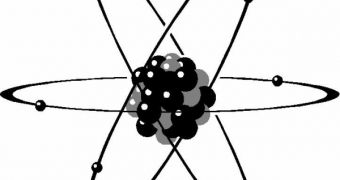I bet that, as hard as you may think, you can't come up with what a 5th dimension (besides time and the 3 spatial ones) would be like or where to look for it. But don't worry, Fermilab seems to be miles ahead, as the researchers in Batavia built devices to help them in a series of studies that may prove the existence of other dimensions.
In 2007, people at Fermi National Accelerator Laboratory in Illinois were sunk into the MiniBooNE study, a neutrino (subatomic particles) detector as they came across a strange anomaly. Within a muon neutrino beam in a Fermilab particle accelerator, a very high amount of particles in the low-energy range (below 475 million electron volts) had changed into electron neutrinos. OK, a bit of explanation required, right?
Neutrino particles have no electric charge, as well as a very small mass, and they form nuclear reactions and cause particle decays. Just like quarks, they come in three flavors (or types – if you've read our previous article related to quarks, you know what that's all about): electron, muon and tau, randomly oscillating between flavors along their way. Now, after a year of analyzing data, experts at Fermilab failed to attribute this phenomenon of so called low-energy excess to conventional physics.
Extra dimensions were anticipated a long time ago by the string theorists, people who aim to join the laws of quantum mechanics and those of gravity into a whole. The hypothesis states that all the particles in the universe are confined in the known four-dimension "brane" comprised in a 10-dimensional "bulk." The sterile neutrino, a particle that interacts with the others only by means of gravity, could jump in and out of the "brane," shortcutting the rest of the dimensions. Three years ago, Heinrich Päs (University of Dortmund, Germany), Sandip Pakvasa (University of Hawaii) and Thomas J. Weiler (Vanderbilt University) imagined that these sterile neutrino inter-dimensional jumps would cause flavor oscillations at low energies.
This is precisely what the MiniBooNE guys found. Eager to test this, they plunged into a $15 million new detector project, called the MicroBooNE, a cryogenic tank housing 170 tons of liquid argon. It is said to be able to detect low-energy particles much more precisely than its older brother, next to which it's going to be placed in order to test the same neutrino beams. Currently, it just passed approvals for the design phase and it may take at least 3 more years until it's ready, if nothing goes wrong.
The researchers hope for much larger devices based on their design (hundreds of thousand tons of liquid argon in huge, stadium-sized reservoirs) that would study the rarest of proton decays. Bonnie Fleming, physicist at Yale University and MicroBooNE spokesperson is thrilled: "It’s a fantastic new technology. And it’s crucial for taking the next step in physics."

 14 DAY TRIAL //
14 DAY TRIAL //